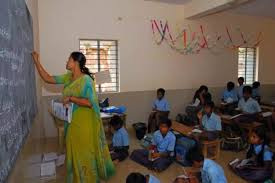Bihar govt school teachers can now arrange their own transfers via online portal

The Bihar government has taken a major step toward improving transparency and autonomy in its education system. With the introduction of the E‑Shiksha Kosh portal, government school teachers can now arrange mutual transfers online without relying on district or state-level officials. This development marks a shift toward a more teacher-centric and digitally empowered administration.
Why This Move Matters
Previously, school teachers in Bihar struggled with delays, bureaucracy, and favoritism in the transfer process. Many spent years waiting for postings closer to home. Now, educators have a direct path to initiate and complete transfers by simply logging into a web portal.
With this new system, teachers don’t need to seek approval from secretariat-level offices. They can now choose their own matches, verify details, and receive transfer orders—all within a few clicks.
How the Online Mutual Transfer System Works
The process is simple, structured, and teacher-friendly:
- Create a Group: Teachers who want to transfer must form a group of 2 to 10 people from the same subject and category. For example, only science teachers from the secondary level can mutually swap with others in the same category.
- Search for Matches: The portal allows users to search for transfer partners by district, block, or division. It shows the verified contact numbers of potential matches after an OTP-based login.
- Apply for Transfer: Once a group forms, it can submit up to 10 preferences for transfer locations.
- Get Approval Quickly: The system processes applications and issues transfer orders within 3 days. Every group member must join the new school within 7 days. If even one person fails to do so, the entire transfer stands canceled.
This rule encourages accountability among group members and ensures smooth execution.
Timeline and Key Dates
The government rolled out the broader teacher transfer process in June 2025, before opening the mutual transfer window in July:
- June 20–23: Transfer letters were issued to over 1.3 lakh teachers using the portal.
- June 30: Teachers had to report at their new schools. Those who failed to join lost their transfer placements automatically.
- July 10–31: The portal allows mutual transfers during this specific window. Teachers must finalize their groups and submit applications during this time.
Benefits for Teachers and Students
This reform brings several advantages for Bihar’s education system:
1. Increased Teacher Autonomy
Teachers no longer have to depend on political influence or lengthy paperwork. Now, they can decide where they want to teach and act on it directly.
2. Faster, Fairer Transfers
The system eliminates delays. Since teachers manage their own applications, the risk of arbitrary rejections or favoritism has significantly decreased.
3. Better Staff Distribution
When teachers can choose preferred schools through mutual swaps, schools avoid prolonged staff shortages. As a result, students benefit from consistent classroom teaching.
4. Higher Teacher Satisfaction
Working in a preferred location often improves morale, punctuality, and classroom engagement. This change could result in better learning outcomes for students.
Teachers Speak Up
Many teachers across Bihar have already praised the reform.
“I’ve worked far from home for nearly eight years,” said Meena Kumari, a social science teacher from Gaya. “This new system gave me the chance to trade places with someone in my own block. It’s quick and fair.”
Others echoed similar feelings, especially those in remote postings.
“With the old method, we had to wait for years or ask local leaders for help,” said Vinay Kumar, a teacher posted in Saharsa. “Now, I can contact other teachers directly and arrange a swap within days.”
What Needs Improvement
While the system is promising, a few challenges still need attention:
- Digital Access: Teachers in remote areas might struggle with poor internet connectivity.
- Digital Literacy: Older or less tech-savvy teachers may find the online platform hard to use.
- Group Coordination: Coordinating multiple teachers in a group requires trust and communication, which may not always be easy.
To address these issues, the state can offer digital helpdesks, training workshops, and user guides in local languages. These steps would ensure every teacher can use the system confidently.
A Model for Other States
Bihar’s reform could inspire similar initiatives across India. By giving teachers a role in administrative decisions, the government has strengthened trust between educators and the system.
Furthermore, the portal promotes fairness, speed, and clarity—qualities that other state education departments can adopt to modernize their own teacher management systems.
Conclusion
The mutual transfer portal launched by the Bihar government is more than just a digital tool—it’s a policy shift that respects teachers’ needs while streamlining administration. By allowing teachers to manage their own transfers, the state has set a powerful example of good governance.
With continued support and improvements, this initiative will not only improve teacher satisfaction but also ensure that Bihar’s students receive more consistent, quality education.






